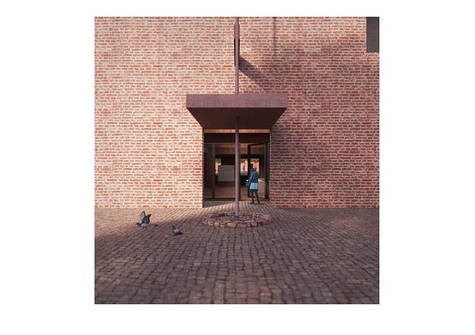Sebastiaan van Heusden
Een huis voor de stad
Home for the city
In the past, city halls were prominent buildings which reflected the wealth and power of a city. They were public places where citizens saw sentences carried out, heard speeches from the mayor and got married in the representative halls. The functioning of the city hall has changed over time, and so has the building. It is, therefore, no longer of this time to make a city hall that radiates power and status in the way the city hall on Dam Square did. It is important for a city hall to express the image of the city, but nowadays, it is also important to make it an inclusive place.
The municipality makes developments to involve citizens in the democratic process. By speaking with people at the municipality working on the environmental vision for 2050, I learned that the vision also describes how citizens can be better involved in decision-making, so not just by consulting people but by participation and co-creation. For this to work, the municipality must actively approach citizens because the same type of people often attends public consultation evenings and often manage to find their own way into politics.
An inclusive municipal policy requires a building that radiates this. Inclusiveness not only means that everyone is welcome - but also that people are actively approached. It is a new attitude that the municipality is adopting, which creates a new social context.
Just as the city hall on Dam Square (now palace) is a reflection of the time when it was built, what might today's city hall look like if it reflects the current context?
The building as a ruin; Unlike what we are used to with new construction, a ruin reminds us of the transience of the building. I believe a ruin holds a natural quality, and it is precisely by taking this as a starting point that we see the potential of such a structure. The walls that form the urban space are constructed first. The shape this structure takes is a reminder of the old Vlooienburg district, which stood at this location.
The presented design is my current interpretation of a contemporary city hall for Amsterdam. It is a proposal that lends from history, tradition and a sense of belonging, but has resulted in a completely new structure. The ruin that has arisen can be filled in and used, but it is an open end, which can be filled in and endlessly modified. Both the buildings and the squares. The new adjustments will be visible, and the story of Amsterdam will continue to be told that way. But the main structure will always be, at least partially, readable. "Everything is transformation". I hope that my attitude as a designer aligns with the attitude I think the city should adopt. Open to its inhabitants, open to change, without erasing its past.
Graduation date: 24 August 2022
Graduation committee: Chris Scheen (mentor), Arna Mačkić, Uri Gilad
Additional members for the exam: Donna van Milligen Bielke, Miguel Loos









